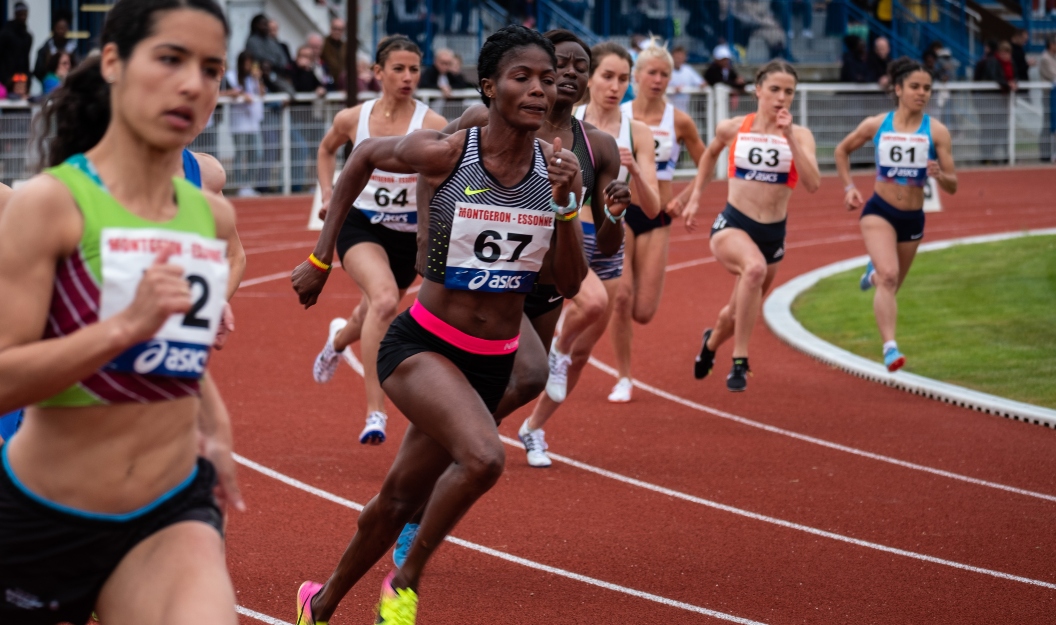Dr. Shonté Jovan Taylor dives into the psychology of women in sports.

By Shonté Jovan Taylor, Ms(c)c, Ph.D.(c), Photo by Nicolas Hoizey
Summertime is here, which means summer sports!
As we celebrate 50 years of Title IX, we acknowledge its impact on empowering women in sports. This law revolutionized U.S. education by prohibiting sex discrimination in schools. It paved the way for women to enter historically male-dominated professions, opening up access to funding and opportunities.
As we consider the gender gap in sports, it’s important to reflect on progress made and hurdles that remain. Data shows that women still face disparity in opportunities to compete equally with men, even among specific socio-economic or ethnic groups.
Examining how female athletes perceive their journey can offer insights into how it shapes their thoughts, decisions and behaviors.
So, how do the current gaps affect the mindset and behavior of female athletes when it comes to success?
Gender shapes perception, be it with athletes, coaches or in the corporate world. Biases, both conscious and unconscious, influence our views of women’s cognitive abilities. Such bias can impact athletes and coaches alike on psychological and cognitive levels.
Humans have innate needs that shape our behavior. Dr. David Rock’s S.C.A.R.F. MODEL identifies five domains that can evoke major threats and rewards in our psyche and brain. S.C.A.R.F. represents five universal desires driving us all: Status, Certainty, Autonomy, Relatedness and Fairness. Since the brain is five times more reactive to threats and losses than rewards, any threat to these needs can significantly activate our threat brain, hindering functions like decision-making and reasoning and focus.
For example, if athletic opportunities for women are perceived as unequal compared to men, our brains perceive this as a threat. This in turn affects our cognitive and emotional abilities such as cognitive flexibility. It can also take a toll on our mental resources. Frustrating, right?
In male-dominated sports cultures, women adopt male mannerisms to improve status and social connections. This mimicking behavior has deep roots in our tribal past when surviving as a group was critical. Neuroscience reveals that social rejection is processed like physical pain in the brain, pushing us to avoid pain for good reason.
However, when females conform to male norms, it affects the female brain, deviating from our distinct brain functions and undermining our authenticity. This ultimately limits our ability to leverage our strongest neural networks and talents. On average, females have a thicker prefrontal cortex that enables trend-spotting and problem-solving. They also excel in intuitive thinking, empathy and understanding nonverbal communication—all of which are desirable assets and superpowers, if you ask me.
According to the 2022 Women’s Sports Foundation Report, only 41% of women’s NCAA teams had female head coaches in 2020-2021, down from 90% in 1971. The situation for men’s NCAA teams is worse, with just a 6% female head coach representation. So while Title IX aimed to ensure equal opportunities for women in sports, the progress for scholarship opportunities, director and coach positions remain male-dominated, hindering equality.
These gaps in funding and leadership representation impact mindsets, leading to less perceived fairness and certainty, higher stress levels and diminished cognitive resources. To address these inequities, we need to ensure women have equal opportunities and resources to succeed in sports.
How can we take steps beyond Title IX to close these gaps for good?
Put Values Over Money
Prioritizing values over money is crucial. Money dictating opportunity distribution means fighting uphill for inclusivity, exhausting both women and our allies. Prioritizing values is energy efficient, leads to progress and makes for a more egalitarian society.
More Allies and Advocates
We need trailblazers brave enough to face rejection and pave the way for others. Navigating talent in sports demands mental and emotional fortitude. For instance, my mother coaches young female golfers and advocates for their resources—like equipment and tournament fees— so they can focus on playing and honing their skills. It’s not easy, but her perseverance has led to success for her team.
Increased Visibility
Marketing can boost brain reward activity by creating in-group similarities and reducing unfamiliarity. Thus, promoting visibility of women in sports is crucial for raising attention and awareness. Increasing marketing spend to enhance familiarity leads to greater similarity and relatedness. Visibility is key!
Marketing (Re)branding Changes Hearts and Minds
Redefining gender roles can counteract deep-seated biases that affect the decisions of men. Women may be unfairly judged due to assumptions about their capacity to handle executive or coaching roles. These biases could stem from uncertainties about the future for women, whereas men are often granted the benefit of the doubt. It’s crucial to tackle these negative stereotypes for the healthy career progression of women.
Bring Awareness to the Female Brain Superpowers
Despite the surge in sports opportunities for girls and women since Title IX, the low number of female coaches is startling. Their valuable perspectives, often overlooked due to perceived unfairness, can lead to a more competitive and innovative sports industry.
Increase Empathy and Kindness
Believing “nice guys finish last” creates a system where the callous thrive at the expense of kind individuals. However, empathy and kindness are not soft skills but catalysts for evolution. Activating mirror neurons through kindness can have powerful effects. Intentional isolation and inequity amplify the status quo, causing pain and hindering progress. Let’s reject the idea that compassion is a weakness and work toward a society where everyone can thrive.
Individual and Collective Reflection
As we consider reimagining and reorganizing sports structures, what is the true cost? Is it money over values or trust over mistrust? If we approach with curiosity and a growth mindset, we can progress toward a more equitable society. But until we all embrace it, progress will be slow.
Title IX and other equity laws have paved the way for young girls to fulfill their athletic aspirations and reach new heights. Though progress has been made, there’s still a long road ahead to ensure that all women and girls have equal access to sports opportunities.

